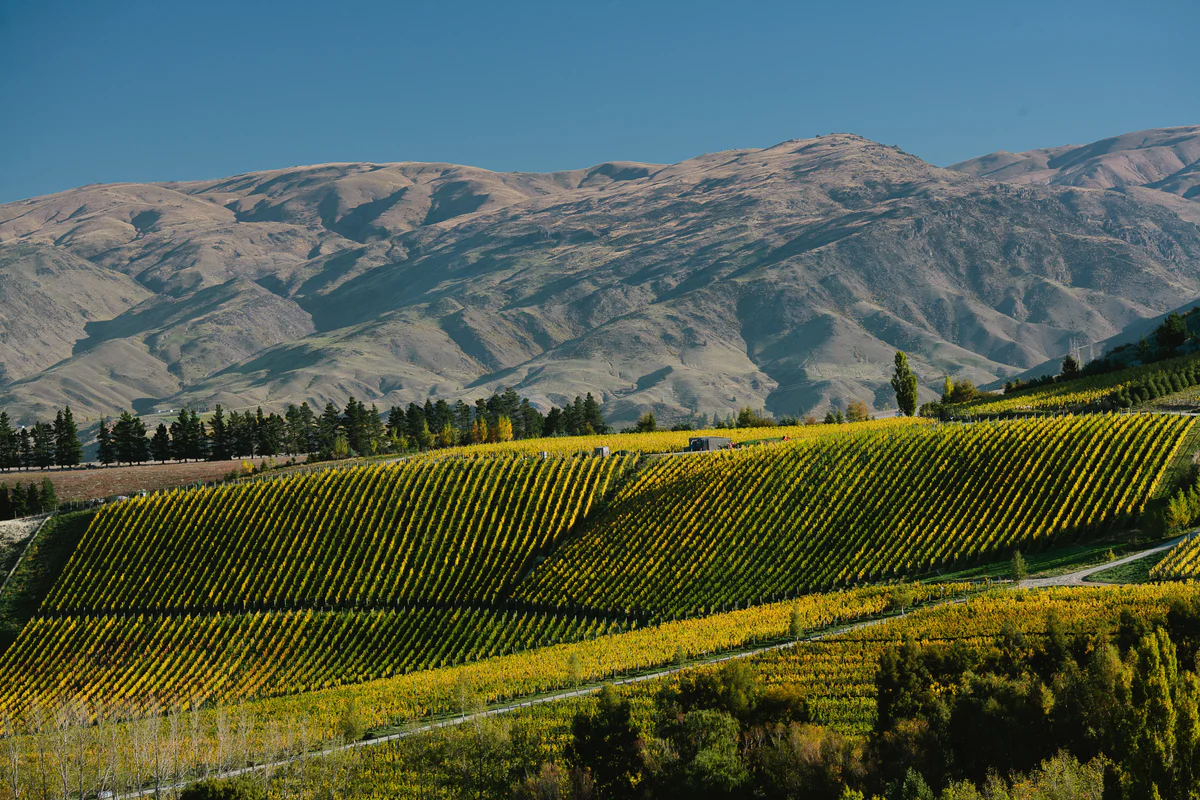
Tucked within the dramatic landscapes of New Zealand’s South Island lies Central Otago, the world’s southernmost commercial wine-producing region. Renowned for its spectacular scenery—rugged mountains, vast open plains, pristine rivers, and glacial lakes—Central Otago offers a remarkable combination of terroir, culture, and winemaking innovation. Despite its relative youth in commercial wine production, the region has quickly earned international acclaim, particularly for producing some of the world's finest Pinot Noir.
A Region Shaped by History
Central Otago’s viticultural heritage stretches back to the gold rush era of the 1860s. Jean Desire Feraud, a French miner who arrived during this period, was among the first to recognise the region’s potential, planting vines near Alexandra. His pioneering efforts saw Central Otago wines winning medals in Australian competitions as early as the 1880s, yet commercial wine production soon declined as gold fever waned. It wasn’t until the 1970s and 1980s that the region witnessed a true revival. Early visionaries like Alan Brady of Gibbston Valley Winery planted Pinot Noir experimentally, discovering the extraordinary potential of this challenging climate. The first commercial release from Gibbston Valley Winery came in 1987, sparking renewed interest. Soon, the region’s strikingly expressive Pinot Noirs captured global attention, rapidly elevating Central Otago to the forefront of the international wine stage.
Unique Geography and Terroir
This is New Zealand’s only wine region defined by a true continental climate, characterised by significant temperature extremes—hot, dry summers and cold winters with frequent frosts and snowfalls. This extreme environment results in grapes with concentrated flavours, vibrant acidity, and extraordinary freshness. The region’s vineyards are predominantly planted at elevations ranging from 200 to 450 metres above sea level, surrounded by mountains which shield vines from maritime influences. The landscape is defined by mineral-rich soils—particularly schist-based—that contribute to the wines' distinctive minerality. These soils, coupled with meticulous vineyard management and irrigation from the pristine rivers, allow grapes to thrive despite the region’s low rainfall.
Sub-regions and Their Distinctive Styles
Central Otago comprises several distinct sub-regions, each with its unique characteristics:
• Gibbston Valley: Known as the "Valley of Vines," Gibbston is the coolest and highest sub-region, producing Pinot Noir marked by elegance, finesse, and bright red fruit flavours.
• Bannockburn: Often dubbed Central Otago’s "Grand Cru" area, Bannockburn produces structured, powerful wines characterised by darker fruits, spice, and impressive ageing potential.
• Cromwell Basin: Encompassing the warm, dry areas of Pisa and Lowburn, this sub-region yields ripe, fruit-forward wines with rich textures and approachable charm.
• Bendigo: Known for some of the warmest temperatures in Central Otago, Bendigo produces intensely flavoured wines marked by concentrated dark fruit and significant tannic structure, ideal for ageing.
• Alexandra Basin: With extreme diurnal temperature shifts, Alexandra delivers aromatic, complex Pinot Noirs and vibrant whites, especially Riesling and Pinot Gris.
• Wānaka: The picturesque vineyards near Lake Wānaka produce elegant, refined wines with notable minerality and freshness, influenced by slightly cooler lake breezes.
Grape Varieties and Wine Styles
Pinot Noir is undeniably Central Otago’s star, accounting for over 70% of vineyard plantings. These wines are celebrated globally for their intense fruit purity, silky texture, and complexity, often described as a cross between Burgundy’s elegance and the fruit-driven styles of Oregon.
Beyond Pinot Noir, Central Otago excels in aromatic whites such as Riesling, Pinot Gris, and Chardonnay. Rieslings are notable for their crisp acidity, lime-driven flavours, and mineral depth, while Pinot Gris offers fuller-bodied expressions with notes of pear, spice, and honeyed textures. Chardonnay, benefiting from cool nights and sunny days, delivers wines of elegance, precision, and balanced oak integration.
Culture, Food, and Wine Pairings
Local food and wine culture is deeply intertwined with its stunning natural environment and a strong emphasis on sustainability. The region celebrates local ingredients—fresh lake fish such as salmon and trout, wild venison, lamb from the surrounding high-country farms, and orchard fruits like cherries, apricots, and nectarines. Pinot Noir, with its balance of fruit and savoury nuances, pairs exquisitely with local venison, slow-roasted lamb seasoned with wild thyme (an aromatic herb that thrives across the hillsides), or smoked duck breast.
The vibrant acidity of Riesling complements freshwater salmon dishes or Asian-inspired seafood preparations, while the region’s refined Chardonnay pairs wonderfully with creamy dishes featuring local cheeses or poultry. Visitors to Central Otago also find a vibrant arts and café culture, particularly in towns like Queenstown, Arrowtown, and Clyde, where small eateries and artisan producers showcase regional specialties alongside local wines.
Leading Producers and Their Stories
Central Otago’s reputation has been significantly shaped by pioneering wineries and visionary winemakers:
• Akitu: A family-owned estate that is particularly recognised for its single-vineyard Pinot Noir wines
• Burn Cottage: Biodynamic winery since day one.
• Felton Road: Based in Bannockburn and renowned for biodynamic viticulture, Felton Road consistently produces wines praised worldwide for their depth, elegance, and profound terroir expression.
• Mount Difficulty: Located in Bannockburn, Mt. Difficulty captures the intensity and structure associated with its distinctive terroir, crafting wines recognised for power and elegance.
Explore our carefully curated selection of Central Otago wines on our shop, highlighting the very best that this remarkable region has to offer.






















